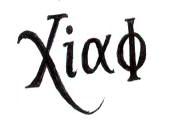The boat as a metaphor for nation (Manila Times Walking History)
by xiaochua
April 20, 2019
MICHAEL CHARLESTON “XIAO” CHUA
IN last week’s column, I tried to establish that our nation’s story began with a boat. In a new National Historical Commission of the Philippines and De La Salle University coffee table book, Tataya: Documenting the Story of the Ivatan Boat, to which I contributed an essay, I wrote that this maritime culture that still exists in Batanes, was reflected in the spiritual beliefs and burial practices of our ancestors, and in how our heroes imagined the Filipino Nation.
“Our maritime culture was also reflected in our ancient faith and world view. The Manunggul burial jar found in Palawan shows us that our ancestors believed that when we die, our soul rides a boat into the afterlife. Historian Bernadette Abrera pointed out that the boat in the Manunggul Jar actually has a face, indicating the belief of our ancestors that boats and things also have souls, especially if they came from nature. Since it is to nature where our ancestors dwell as anitos in the afterlife and so they had much respect for it.
“This connection of the boat to the afterlife is reflected in other ancient burial practices in the country. In Sulu, Mindanao, the design of the sunduk grave markers resemble a boat with a soul riding it. In Sagada, Cordillera, as well as in Romblon and other parts of the country, coffins had boat-shaped designs; and in Batanes, grave markers were actually shaped like boats.
“These ancient boats proliferated in other material cultures across Southeast Asia. In Batanes, Peter Bellwood and his team of archaeologists found a workshop, a place where an ancient jade earring called the lingling-o was made, in Anaro, Itbayat. The design of the remnants of lingling-o matches with other lingling-o designs found in other places not just in the Philippines but in neighboring Asian countries as well: Lanyu Island, Taiwan; Go Ma Voi, Vietnam; El Nido and Uyaw Cave, Palawan; and Niah Cave, Sarawak. Also, the raw material of these items — jade (nephrite) — is not found in the Philippines but in Southern China and Taiwan. Batanes, with its proximity to Taiwan, definitely had a role in facilitating not just the creation but in the proliferation of these designs throughout Southeast Asia.
“But our seas and rivers were not only highways through which our culture flowed, they were also the network that facilitated trade and kaginhawahan. Historian Zeus Salazar pointed out that most of the rich kingdoms near the riverbanks and seashores: Vigan, Lingayen, Maynila, Sugbu, Butuan, Sulu, and others, became part of the Southeast Asian trade route to China.
“With the introduction of the wheel and construction of roads and bridges, Spanish colonialism took us way from navigation and seafaring and our real talent and natural aptitude in the maritime culture. Yet, the ancient boat culture lives in Batanes.
“Our national hero José Rizal once predicted in an essay titled ‘The Philippines Within a Century’ that if a new generation of Filipinos were to have a second look at our maritime culture, we might be a great nation, ‘With the new men that will spring from her bosom and the remembrance of the past, she will perhaps enter openly the wide road of progress and all will work jointly to strengthen the mother country at home as well as abroad with the same enthusiasm with which a young man returns to cultivate his father’s farmland so long devastated and abandoned due to the negligence of those who had alienated it. Then the mines — gold, iron, copper, lead, coal, and others will be worked again — which will help solve the problem of poverty. Perhaps the people will revive their maritime and commercial activities for which the islanders have a natural aptitude, and free once more, like the bird that leaves his cage, like the flower that returns to the open air, they will discover their good old qualities which they are losing little by little and again become lovers of peace, gay, lively, smiling, hospitable, and fearless.’
“When Andres Bonifacio during the Philippine Revolution called the country Katagalugan instead of Filipinas, he meant that we were Taga-Ilog — River People. If in a boat, the concept of barangay as a community that eventually became the bayan began, we continue to have a metaphor for our country as ‘The Ship of State.’”
From the balangay boat to the barangay economic unit to the bayan and the Sambayanang Pilipino, we have come a long way.
Thus, the still existing boat culture in Batanes can give us an idea of our ancestors’ maritime culture that may inspire us to imagine and see our commonalities as Austronesians despite being an archipelagic people who are now multi-cultural and multi-ethnic and having 171 different languages. Thus, we realize we are one nation with a common sentiment and predicament. That we are all just in one boat.
